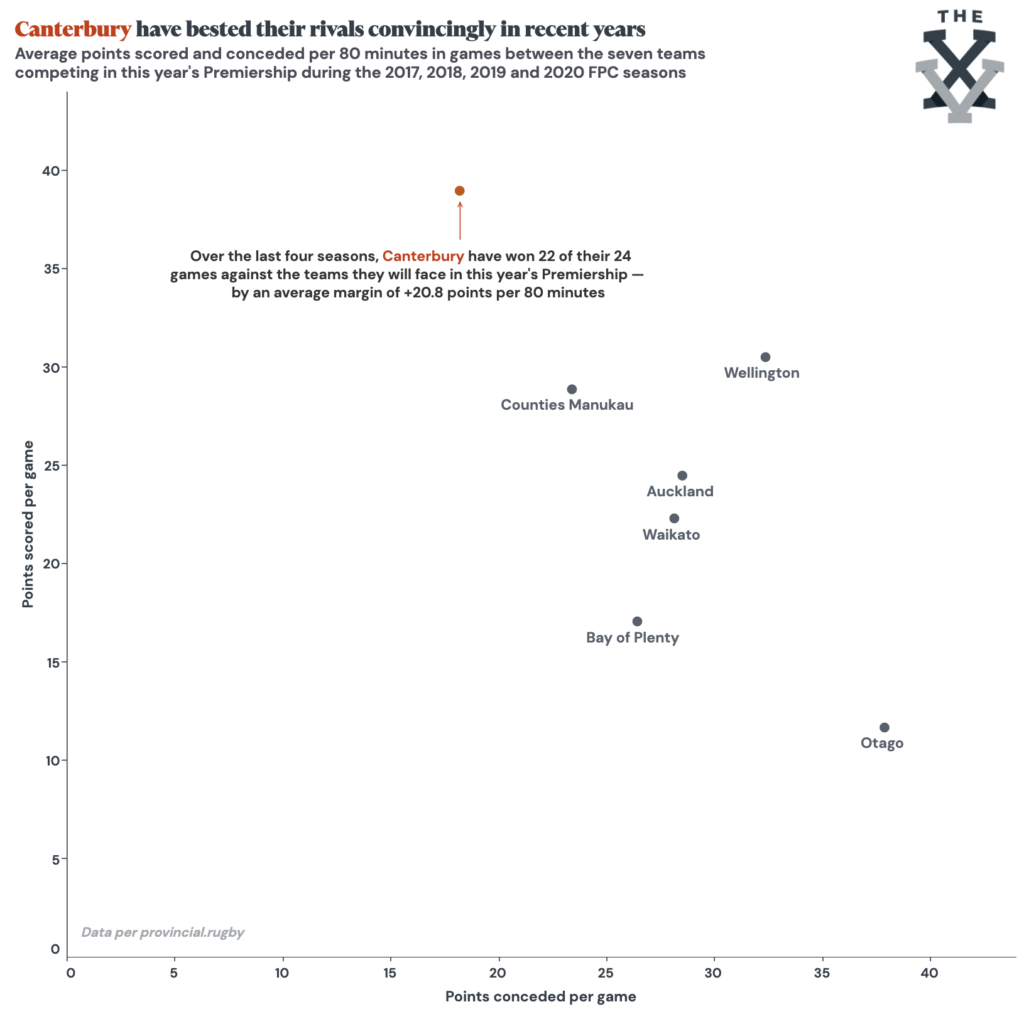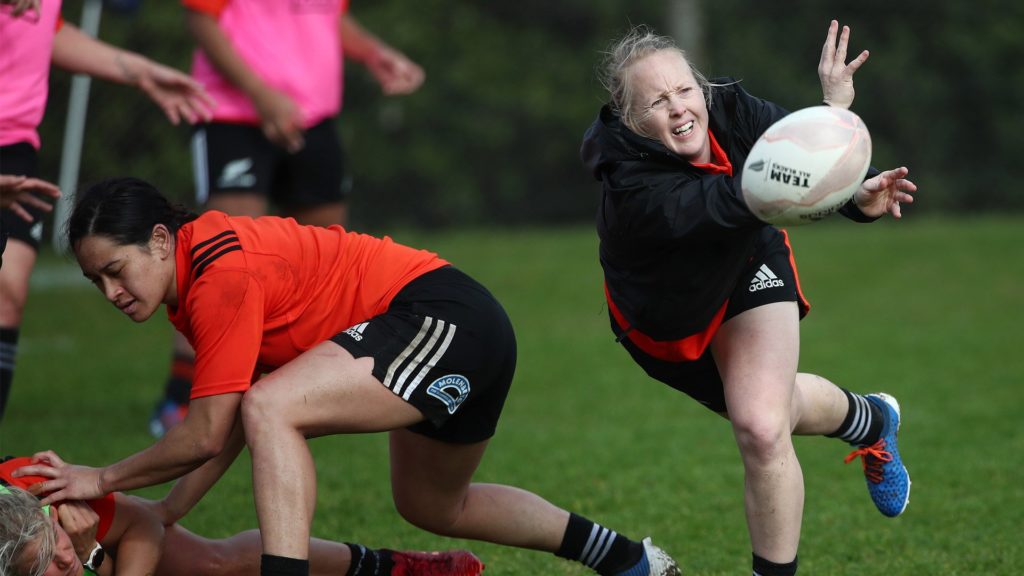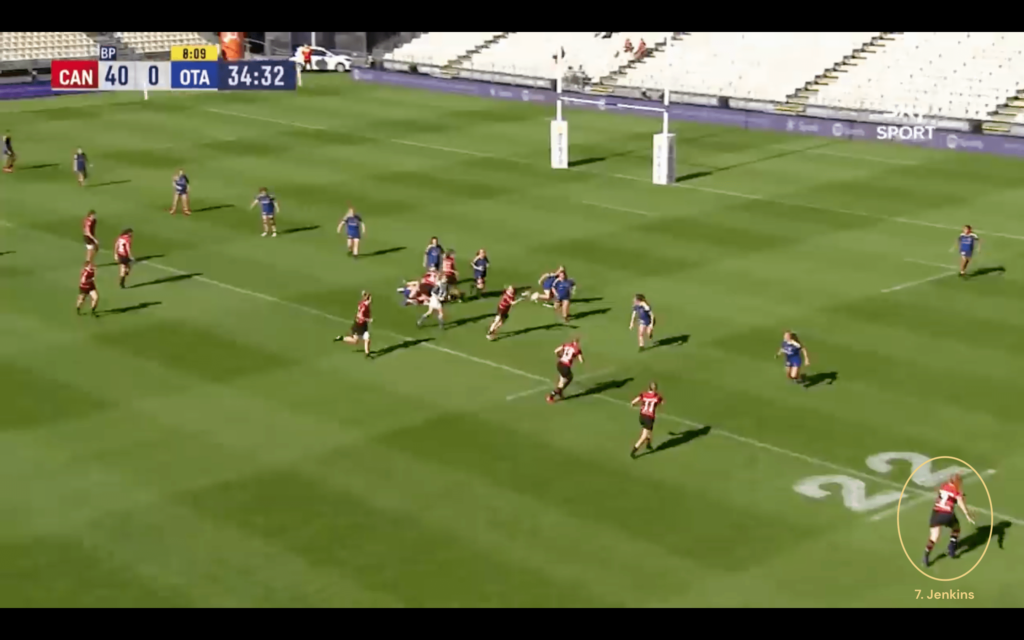Maybe something shifted in the atmosphere around Christchurch at the start of 2017.
Having been unable to buy any luck in finals football during Todd Blackadder’s long spell as head coach, the Crusaders claimed their first Super Rugby crown in nine seasons at Ellis Park in August of that year.
Then, a couple of months later, Canterbury put seven previous Farah Palmer Cup final losses behind them and defeated Counties Manukau — the defending champions — on their home patch to register their first-ever provincial title.
So much of their recent success has been down to the cohesion the team has built through consistency of selection — up and down the starting lineup.
And, from that moment on, the red and blacks have been almost unstoppable.
That 2017 win under coach Wayne Love was immediately followed by a repeat the following season. Love’s successor, Kieran Kite, managed to hold on to the trophy again in 2019 before handing over the reins to Blair Baxter — who, of course, retained it again at the end of his inaugural campaign last year.
In all, Canterbury only lost two of the 32 games they played across those four seasons — and over this period were dominant even against other top teams.

However, as Baxter prepares the side to take on their great rivals Counties in this weekend’s opening round of FPC fixtures, there are a number of intriguing questions hanging over them.
So much of their recent success has been down to the cohesion the team has built through consistency of selection — up and down the starting lineup.
In the front row, Pip Love has started 27 of those games at loosehead since the beginning of 2017, while Stephanie Te Ohaere-Fox has started 24 across the 2 and 3 jerseys — despite being unavailable for the entirety of last season.
Behind them in the second row, Chelsea Bremner and Canadian international Cindy Nelles have started 14 of the team’s last 15 fixtures as a pair.
Chelsea’s sister — and team captain — Alana has made 31 starts in the pack since 2017, and is now firmly ensconced on the blindside flank. At the business end of last season, she was accompanied in the back row by Lucy Jenkins (who has started 22 of those 32 games) and Lucy Anderson (who has started 30 — although 25 of those appearances have been in the midfield).
In the halves, Kendra Cocksedge — the beating heart of the side — has been in the 9 shirt 28 times during this period. And, while she has only recently become Baxter’s first-choice first five-eighth, TeRauoriwa Gapper has extensive experience partnering Cocksedge in Christchurch club rugby for University.

Finally, in the outsides, Grace Brooker has started 29 of their last 32 games, Olivia McGoverne 28 and Sam Curtis 26. You get the picture.
Remarkably, over this four-year period as a whole they have averaged only 4.0 changes to their starting team from one given week to the next. As a point of reference, in the current men’s World Cup cycle, Super Rugby sides have averaged 4.9 weekly changes each.
But, on closer examination, the ground underneath them may be shifting slightly.
While Baxter did eventually settle on a first-string lineup in 2020, it was Canterbury’s least consistent year from a selection perspective — particularly in the backline.
Anderson — who had been a near-permanent fixture at inside centre — shifted from 12 to 8 at the start of the year, with McGoverne shuffling in from fullback to take her place. In turn, Grace Steinmetz filled McGoverne’s spot — but, heading into 2021, she has started only three times at the position at FPC level.
In the backfield, Steinmetz won’t be able to develop her own budding relationship with Martha Mataele (née Lolohea) further. The winger was hugely impressive in the seven games she played during the run to last year’s title, but announced in April that she needed to take some time away from the sport as a consequence of a head injury.
This season, a number of other factors will complicate things further between 9 to 15.
For starters, Cocksedge’s partnership with Gapper may have lost a little of its edge after the scrum-half took an extended break from the club rugby circuit earlier this year.
Then, In the backfield, Steinmetz won’t be able to develop her own budding relationship with Martha Mataele (née Lolohea) further. The winger was hugely impressive in the seven games she played during the run to last year’s title, but announced in April that she needed to take some time away from the sport as a consequence of a head injury.
Finally — and perhaps, given their obvious talent, counterintuitively — the integration of a couple of new signings may well cause the team some initial teething problems.
Young playmaker Rosie Kelly has returned to the province at which she began her career, and brings former Otago teammate Amy du Plessis — a centre who made her Black Ferns debut against the NZ Barbarians last November — north with her.

Their pedigree means that Baxter will be keen to integrate them into his lineup as quickly as possible — but, as they start out, this will come at the cost of some cohesion.
New blood in the pack (along with the return of Te Ohaere-Fox) means that things may well be less consistent up front too.
This is especially true in the back row: test Black Fern Marcelle Parkes has shifted down from Wellington and will immediately challenge for a starting spot, while local starlet Jorja Miller — who could be destined for the sevens programme in Mount Maunganui when she leaves school at the end of this year — was already too good to omit after a season of first-grade club rugby for High School Old Boys.
Observers of last year’s competition will have noted a side dangerous in all facets of the game, with Grace Brooker as likely to pierce the line on a sharp angle off set-piece ball as Kendra Cocksedge was to break a match open with a quickly tapped penalty.
Of course, cohesion isn’t the be-all and end-all in rugby — but the way that Canterbury approach the game may make them particularly susceptible to the sort of lineup disruption they are likely to have to weather at the start of their 2021 campaign.
Observers of last year’s competition will have noted a side dangerous in all facets of the game, with Grace Brooker as likely to pierce the line on a sharp angle off set-piece ball as Kendra Cocksedge was to break a match open with a quickly tapped penalty.
Their bread and butter, however was their phase attack.
With exemplary service from Cocksedge at the base of the ruck, they were able to spread their forwards across the field and pick teams apart from deep — the all-round footballing skills of Nelles (and others) in the middle of the park complemented by flankers (Alana) Bremner and Jenkins holding width on the touchline, waiting to take advantage of space.


Closer to the try line, they were equally adept at narrowing things up and powering their way over with brutal breakdown work and strong latches.
It goes without saying that the ability to run either approach seamlessly relies on players possessing a deep understanding of the movements, timings and tendencies of their teammates.
Crucially, this is an understanding that only comes from minutes spent together on the field — and, for all of their talent, it may be in shorter supply in Canterbury’s squad this year than it has been for quite a while.
The talent advantage they held over all the other teams in last year’s South Pool may have obscured some of the impact of Baxter’s more regular changes to his starting team.
However, as they strive to emulate the Crusaders and bring a title home to Christchurch for a fifth consecutive year, a return to the Premiership-Championship model gives the red and blacks a much slimmer margin for error in 2021.


Comments
Join free and tell us what you really think!
Sign up for free